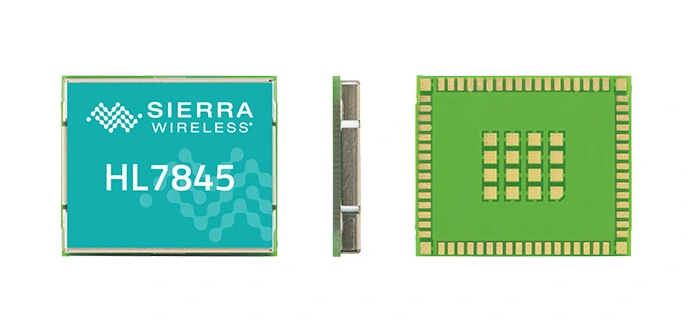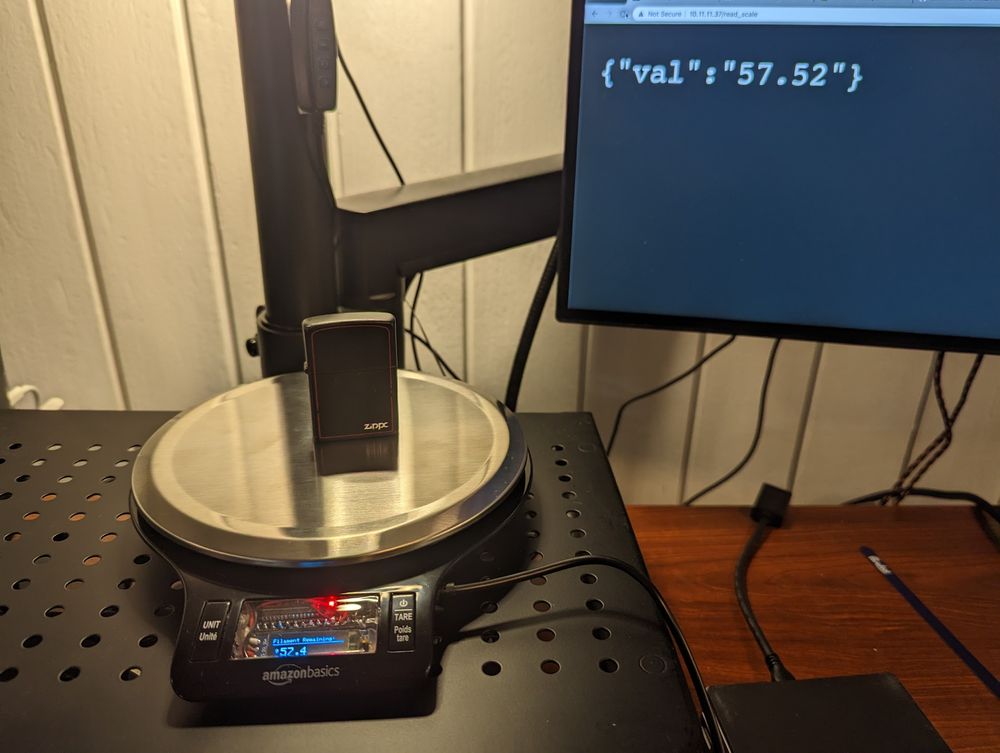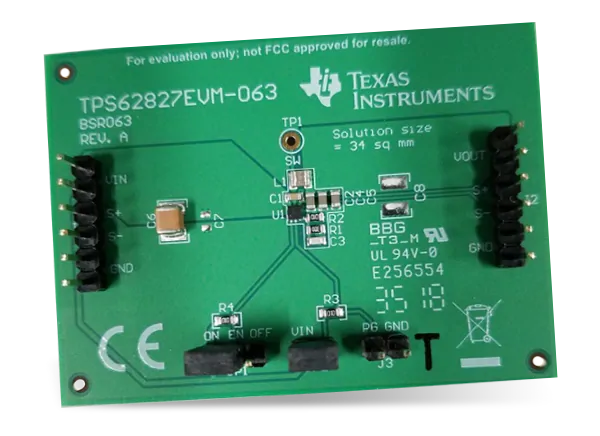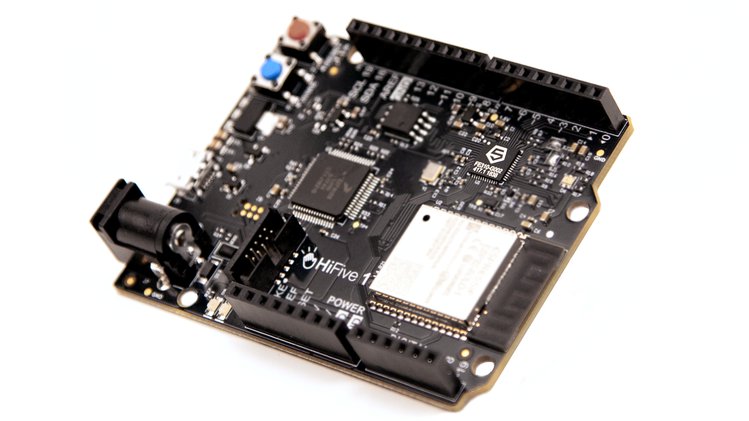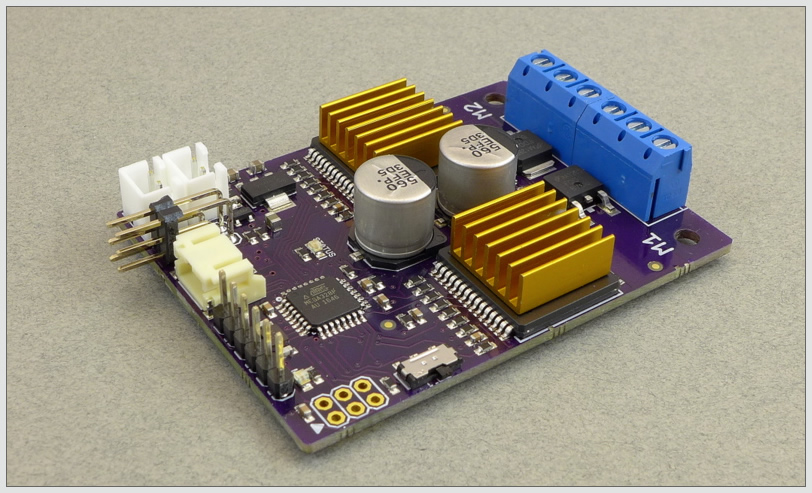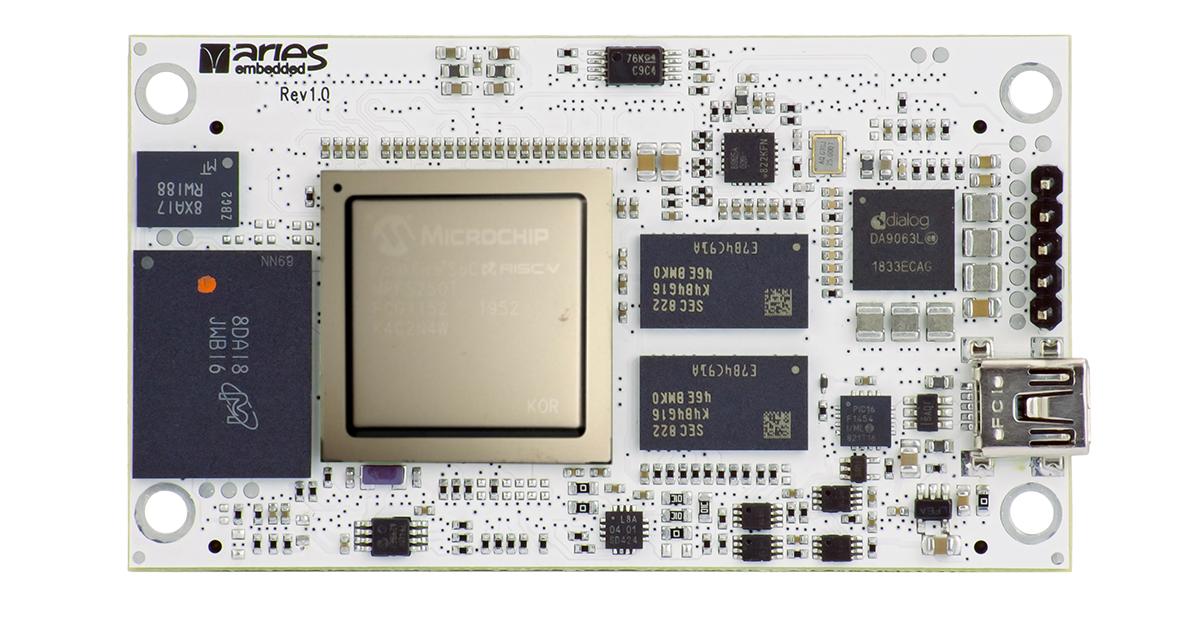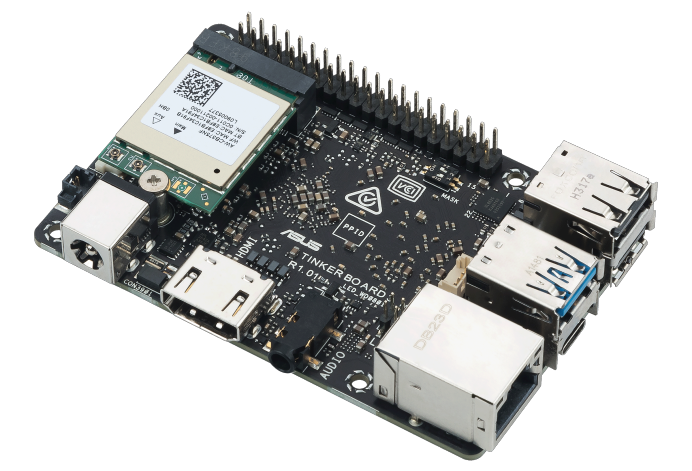
ASUS Tinker Board 3: Rockchip RK3566 SBC with Quad-Core Cortex-A55 and M.2 Expansion
ASUS Tinker Board 3 is a single-board computer (SBC) powered by the Rockchip RK3566 SoC, featuring a quad-core Arm Cortex-A55 64-bit processor. It supports 4K display via HDMI and MIPI-DSI, offers gigabit Ethernet, and has four USB ports (USB 3.0 and USB 2.0). It includes an M.2 E socket for WiFi and Bluetooth expansion and a 40-pin GPIO header compatible with Raspberry Pi 3 Model B layouts. The board is powered by a 12-19V DC input and provides developer-friendly SDKs for integration and panel solutions.
We’ve previously covered various ASUS Tinker Board models, including the Tinker Board R2.0, Tinker Board 3N, Tinker Board 2, and 2S, among others. If you’re interested, feel free to explore those products for more information.
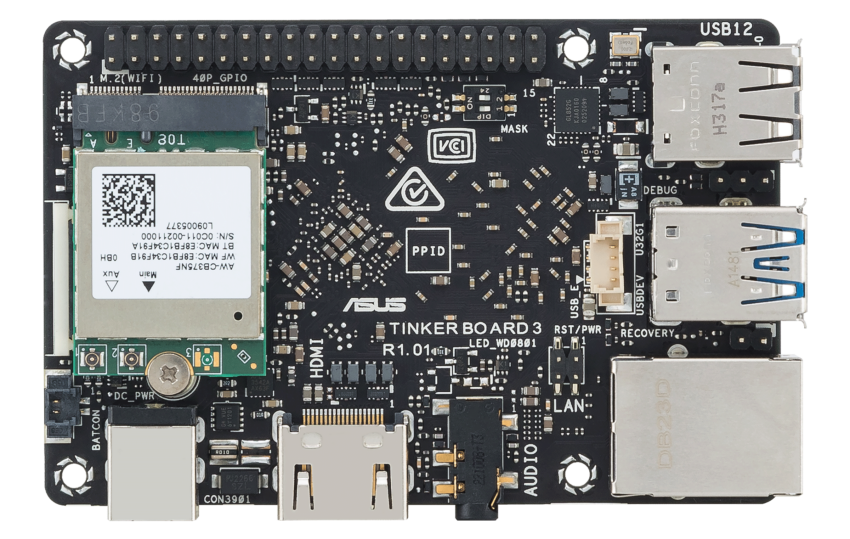
ASUS Tinker Board 3 specification:
- Soc: Rockchip RK3566
- CPU: Quad-core Arm Cortex-A55
- GPU: Arm Mali-G52
- NPU: Rockchip NPU with 1 TOPS
- Memory: 2GB or 4GB Dual-channel LPDDR4
- Storage: 1 x Micro SD (TF) card slot (push & pull)
- Display:
- 1 x HDMI supports up to 4096 x 2160 @ 60 Hz
- 1 x 22-pin four-lane MIPI DSI connector supports up to 6 Gbps, 1920 x1080 @ 60 Hz
- Audio:
- 3.5mm audio jack with microphone support
- 1 x HDMI audio
- USB:
- 1x USB 3.2 Gen1 Type-A
- 2x USB 2.0 Type-A
- 1x USB 2.0 Micro B (device only)
- 1x USB 2.0 4-pin header
- Networking:
- 1x RJ45 port with Realtek RTL8211F
- 1x WiFi 5 & Bluetooth 5.0 (2T2R)
- Antenna: 2x IPEX MHF4 antenna connectors
- Expansion:
- 40-pin GPIO headers
- 2 x SPI bus
- 2 x I2C bus
- 2 x UART
- 3 x PWM
- 1 x PCM/I2S(master/slave)
- 1 x S/PDIF TX
- 2 x 5V power pins
- 2 x 3.3V power pins
- 8 x ground pins
- M.2 E key 2230 socket for WiFi/Bluetooth
- 40-pin GPIO headers
- Others ports:
- 1 x 2-pin recovery header
- 1 x 2-pin power-on & reset header
- 1 x 3-pin debug UART header
- 1 x 2-pin DC fan header
- 1 x 2-pin RTC battery header
- 1 x MaskromDIP switch
- Power: 12V to 19V DC via 5.5/2.5mm power barrel jack
- Dimension: 85 mm × 56 mm
- Temperature Range:
- Operation temperature: 0℃ ~ 60℃
- Non-operation temperature: -40℃ ~ 85℃
- Humidity: 10% ~ 85% (non-condensing)
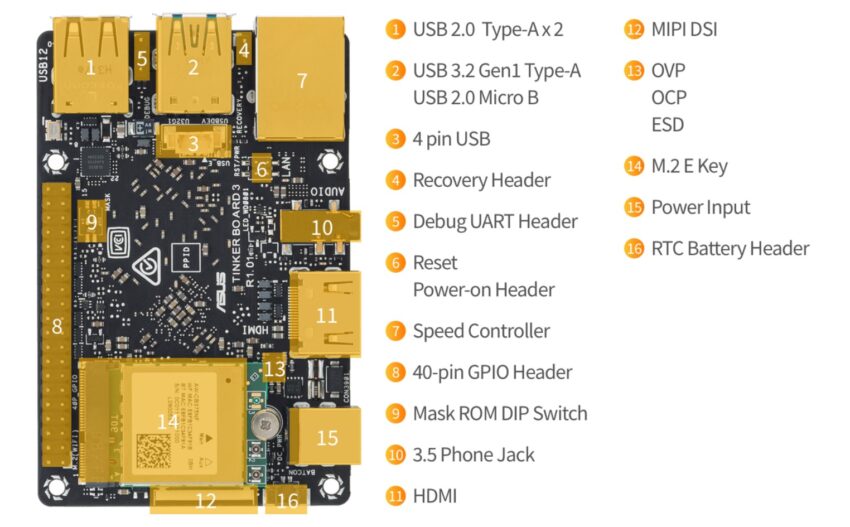
The Asus Tinker Board 3 features the ARM Mali-G52 MP2 GPU, supporting OpenGL ES 1.1/2.0/3.2, OpenCL 2.0, and Vulkan 1.1, making it well-suited for smart retail solutions. It comes with a comprehensive SDK that offers a GPIO API, automatic power-off during idle, software-based USB control, and OTA updates for streamlined hardware maintenance. With worldwide technical support, it is ideal for applications such as kiosks, airport signage, and retail displays. The board supports multiple operating systems, including Debian, Android, and Yocto, providing flexible development options for embedded applications.
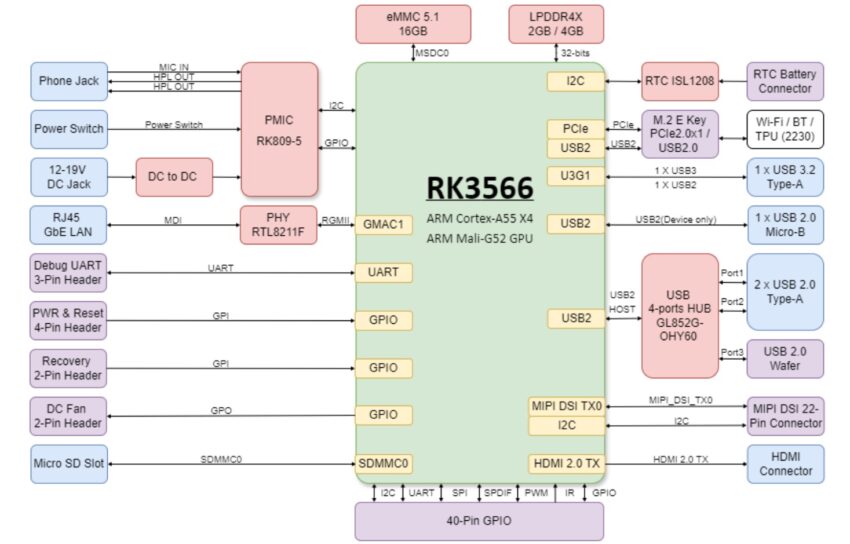
Pricing details for the Tinker Board 3 have not yet been disclosed. For more information, you can visit the official ASUS website. Optional accessories for the Tinker Board 3 include 45W and 65W power adapters, a MIPI converter board for eDP/LVDS interfaces, a PoE splitter, a heatsink, a fan sink, and an aluminum speaker. For more details, visit the product page.






